World’s Most Extreme Vineyards: Nature’s Winemaking Wonders
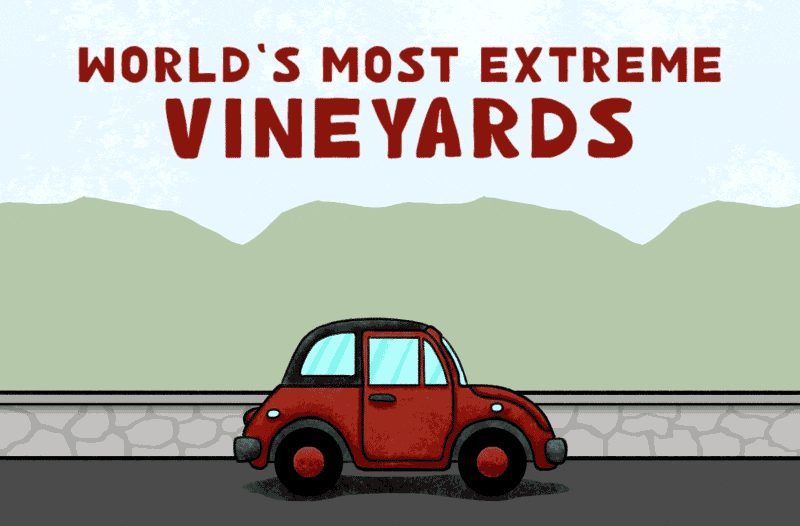 From high-altitude terraces to volcanic slopes, the World’s Most Extreme Vineyards redefine the boundaries of winemaking. Discover the resilience of grapevines and the unparalleled flavours they yield in these unique settings.
From high-altitude terraces to volcanic slopes, the World’s Most Extreme Vineyards redefine the boundaries of winemaking. Discover the resilience of grapevines and the unparalleled flavours they yield in these unique settings.
The Extreme Terrains
In the world of viticulture, where grapes meet the sky and the earth, there exists a fascinating realm of extreme terrains. These landscapes challenge the conventional norms of winemaking, pushing grapes to unprecedented heights and edges.
If we consider all of the commercial vineyards, not some obscure experiment someone has done in impossible environments, there are three general types of extreme winemaking:
- High altitude
- Vineyard inclination
- Unique conditions, such as soil types or microclimate conditions
A Symphony of Altitudes: How High Can Grapes Go?
Imagine vineyards that touch the heavens, where grapes thrive at dizzying altitudes. The quest for the highest-altitude vineyards takes us across continents, unveiling nature’s grandeur in each elevation.
Vineyards located at elevated altitudes normally have lower air pressure and cooler temperatures. This is vital for places with latitudes closer to Earth’s equatorial warm belt.
High-altitude vineyards are known to produce grapes with distinctive characteristics due to the challenging growing conditions. Exposure to intense sunlight and large temperature variations can contribute to unique flavours and aromas in the resulting wines.
There is one important advantage of high-altitude wines in the face of today’s climate changes. Higher altitude enables even ripening of the grapes, resulting in balanced and elegant wines.
Where is the highest-altitude vineyard in Europe?
Two of Europe’s equally highest vineyards are placed in the Alps, though in different countries. One is in Switzerland and the other in Italy:
- Visperterminen, altitudes of up to 1,150 metres, in Switzerland
- Blanc de Morgex et de La Salle, 900 to 1200 meters above sea level, in Italy
Visperterminen
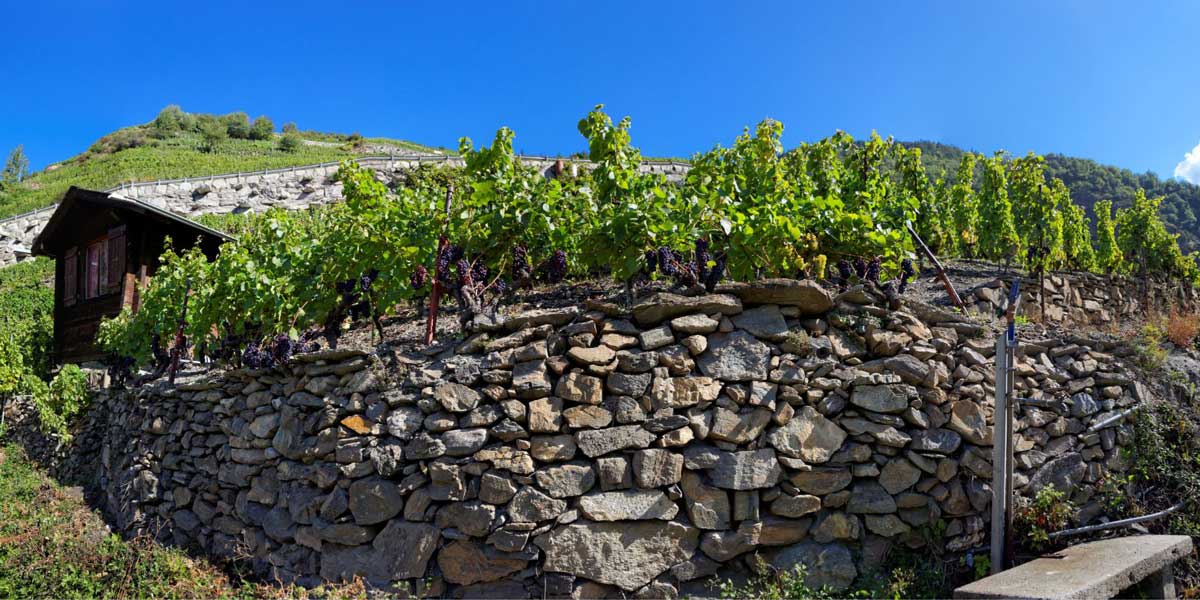
Terminenon, also known as Termenon or Tärbinu in Valaisian German, is a renowned wine-growing community located at the entrance of the Vispertal Valley in the Swiss canton of Valais. The name, with Latin origins, translates to “border (surroundings) of Visp.” Dating back to around 1199, the village is first documented as “Villa Termenuns” near Visp.
The south-facing vineyards, totalling 55 hectares, are divided into multiple areas and span from the banks of the Vispa at 660 meters above sea level. These terraced vineyards feature impressive dry stone walls and ascend over 500 meters, reaching over 1,100 meters. Notably, these vineyards rank among the highest and steepest in Europe. The dry climate and the heat-retaining walls create a “heat chamber”.
The standout wine from Terminenon is the traditional Heida, crafted from the Savagnin Blanc grape variety. Additionally, the region produces the red wine cuvée Dôle, made from Pinot Noir, along with white wines such as Fendant (Chasselas) and Johannisberg (Silvaner). The unique combination of high altitude, steep slopes, and distinctive grape varieties contributes to the distinct character of wines produced in this remarkable Swiss wine-growing community.
Blanc de Morgex et de La Salle
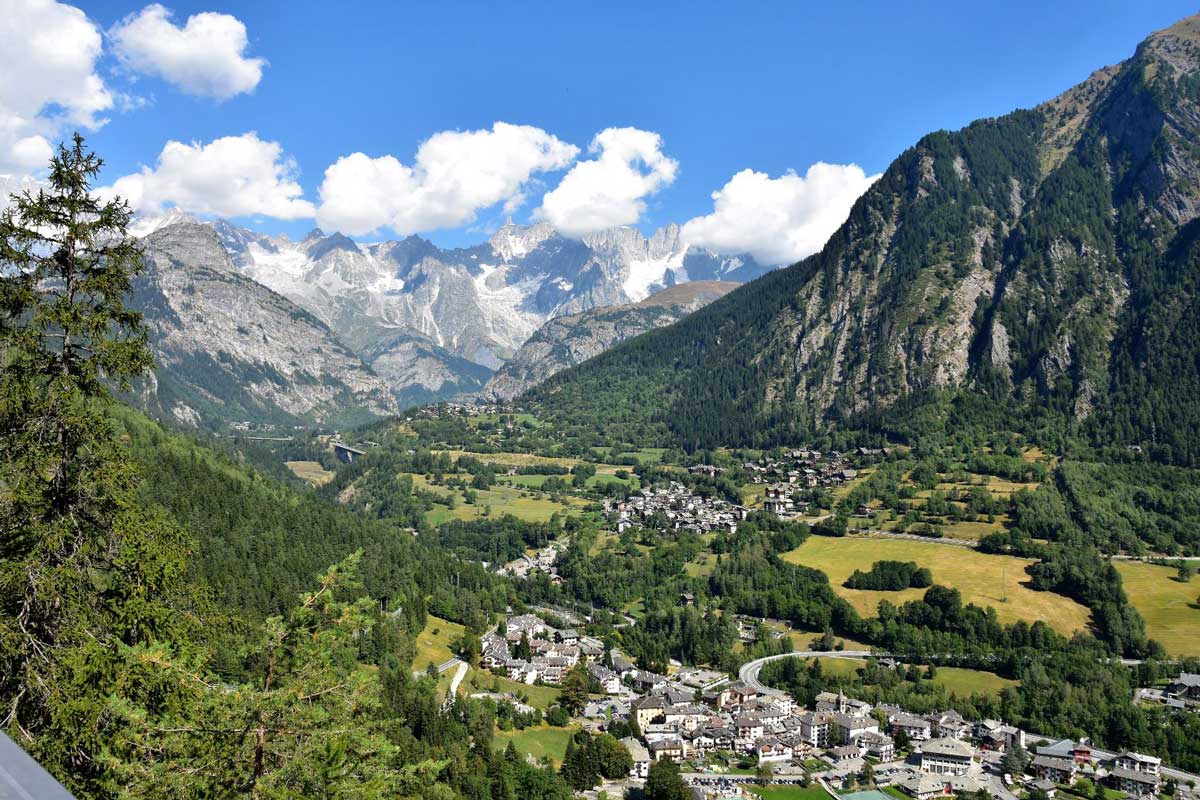
The Valle d’Aosta region in Italy is home to a designated DOC area renowned for its white wine production. This area, a subzone within the broader Valle d’Aosta DOC region, features terraced vineyards spanning 15 hectares. Situated at elevations ranging from 900 to 1,200 meters above sea level, these vineyards grace the slopes on both sides of the Dora Baltea riverbanks in Morgex and La Salle municipalities, with the iconic Mont Blanc as their backdrop.
In the mid-20th century, the future of these vineyards was uncertain, facing the prospect of abandonment. However, thanks to the efforts of Abbé Alexandre Bougeat (1916-1972), a successful initiative was launched to preserve this unique viticultural area. The exposed location, set against the breathtaking scenery, led to the moniker “Bianco dei ghiacciai” (White Glacier Wine).
The wine crafted here is made from the indigenous Prié (Blanc) grape variety, specifically the ungrafted Blanc de Morgex, cultivated on low pergolas. This lively and effervescent wine exhibits enticing notes of citrus and mountain herbs. It is available in various styles, including spumante in extra brut, brut, and demi-sec variations.
The highest-altitude vineyard in Croatia
Currently, the highest-altitude vineyard in Croatia is in the Dalmatian Hinterland, in the Imotski subregion, at 700 metres above sea level.
The vineyard is planted with Chardonnay, though close beneath are planted local grape varieties: Trnjak (red) and Kujundžuša (white).
It is owned and nurtured by Stipe Đuzel, the winemaker.
What is the highest-altitude vineyard in the World?
Although many would rightfully think of the Andes mountain range in South America, the official highest vineyard in the World is in China, or more accurately – Tibet:
Cai Na Xiang, Lhasa
Positioned in the southwestern part of China, Tibet shares borders with Nepal, India, and Myanmar to the south. In the mid-18th century, Catholic nuns and priests introduced knowledge of viticulture and winemaking to this Asian highland. This expertise was then passed down through generations within the Catholic minority.
Taking advantage of this historical legacy, the retired couple Hua and Lu Sheng embarked on a unique venture. In 2012, they planted vines for the first time in the Tsalna community, located on the outskirts of Lhasa on the Cai Na Xiang plateau at an elevation of 3,563 meters above sea level. This marked a significant foray into winemaking in a region with a rich cultural history and challenging geographic conditions.
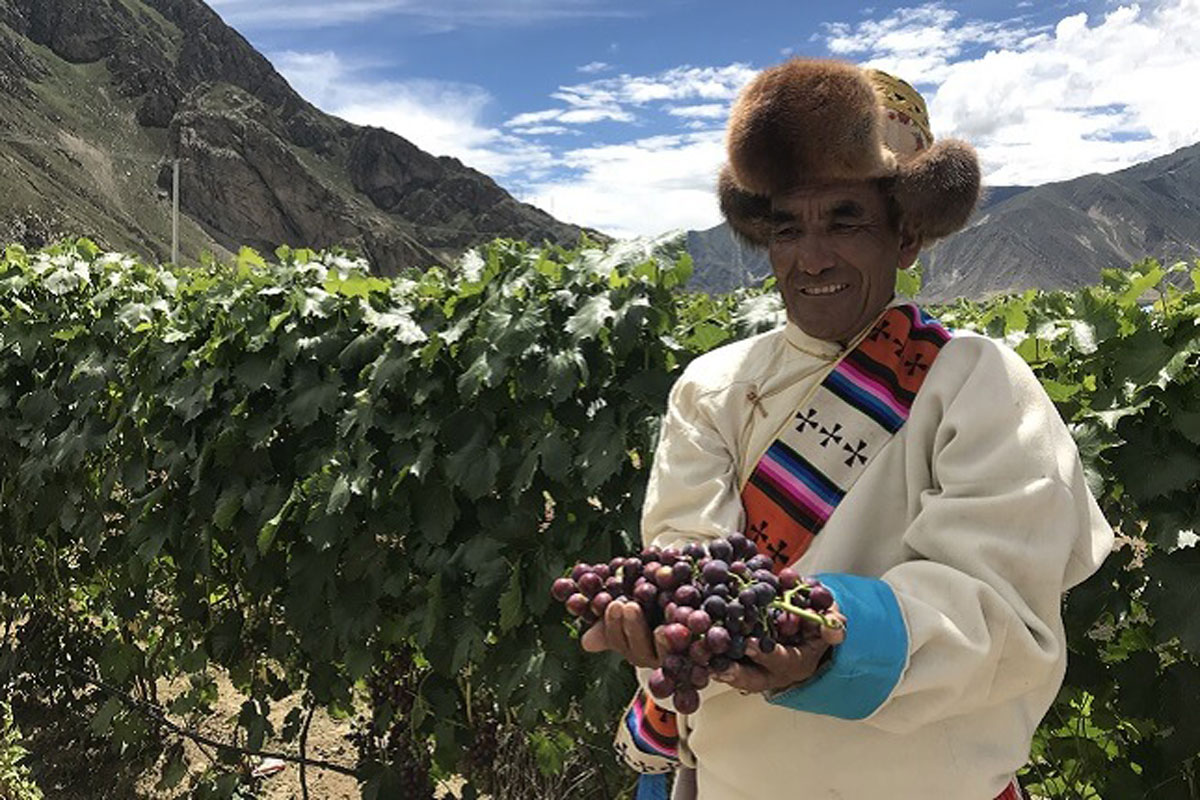
Grapes on the Edge: Cliffside Vineyards
As we delve into the extreme, we encounter vineyards living life on the edge—literally. Clinging to cliffs, these vineyards redefine the boundaries of conventional winemaking, presenting a spectacle that marries nature’s beauty with human ingenuity.
Prepare to be awestruck as we unveil the location of the steepest vineyard on the planet. Witness vines defying gravity, reaching for sunlight in a daring dance between risk and reward.
To clarify, 90° corresponds to a vertical wall. And there are places close to 70° angle.
In Italy, they have an expression for growing vines in such conditions: Viticultura Eroica, which translates to heroic viticulture.
Yes, to grow vines in such places is dangerous and crazy. Yet, extreme inclination is usually combined with a unique terroir. As a result, these places give grapes unparalleled to others.
Where is the steepest vineyard in the world?
However, the world’s steepest vineyard is not in Italy, despite Italians having a whole culture built around their heroic vineyards. It is in Germany, more precisely in Mosel Valley.
The Bremmer Calmont
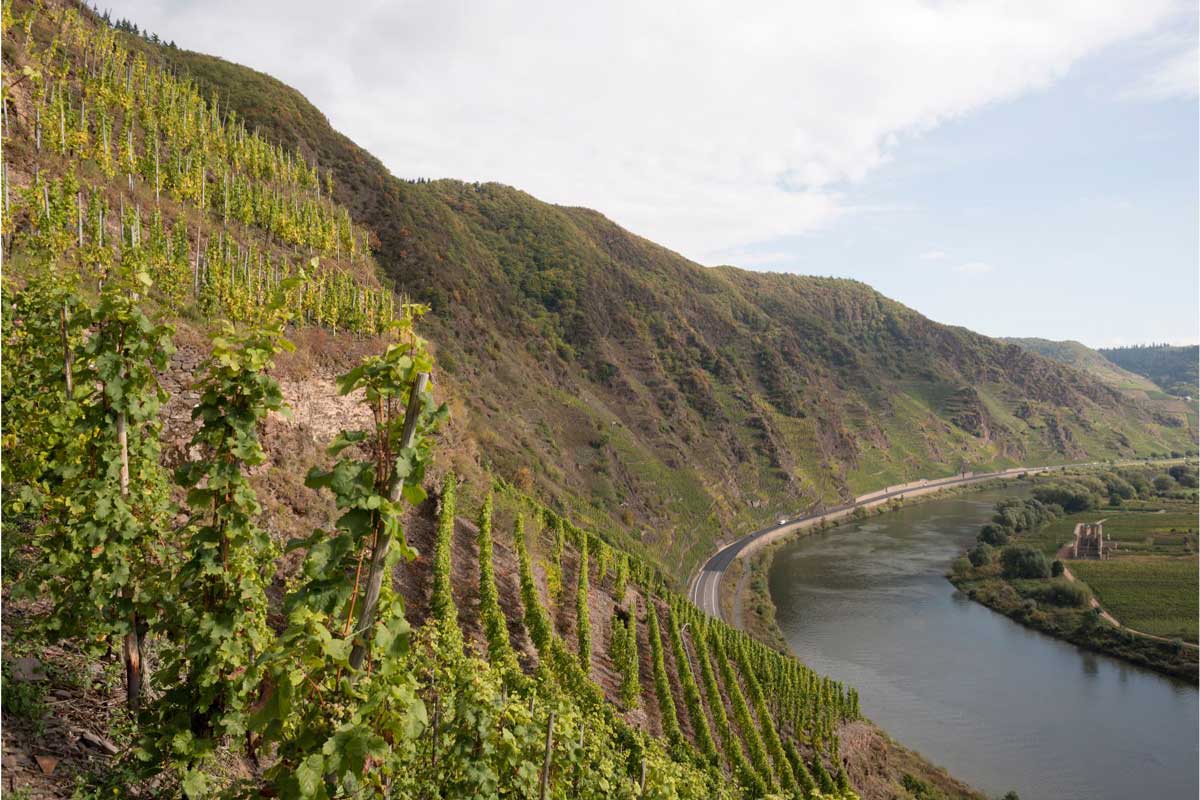
Situated above the quaint town of Bremm and extending along the northern bank of the Mosel River, nearly reaching Ediger-Eller, the Bremmer Calmont is acclaimed as the steepest vineyard in Europe and possibly even globally.
A slope of 68 degrees is exceptionally steep. Traditional mechanical cultivation is frequently impractical, necessitating labour-intensive manual work aided by specialised equipment. The vineyards in such areas are typically organised in terraces supported by retaining walls and stairs. Manual vineyard maintenance is predominantly carried out using rope hoists or specialised caterpillar vehicles. Consequently, traditional cultivation methods like single-pole training are commonly employed in these challenging terrains.
Apart from Mosel, Italian northern regions are notorious for steep slopes. The astonishing examples include:
- Valtellina, in northern Lombardy
- Northern Piedmont (Carema and other appellations)
- Aosta Valley
- South Tyrol
In the Old Word alone, there are many legendary steep-sloped vineyards, particularly in:
- Douro Valley, in Portugal
- Priorat, in Spain
- Alsace, in France
- Rhone, in France (Condrieu, Cornas, Côte Rôtie, Hermitage apellations)
- Dalmatia, in Croatia
Stunning vineyards on the Adriatic Sea
A famous Croatian vineyard site, Dingač captivates not only because of its 50-degree slopes and the gorgeous view of the blue Adriatic Sea beneath.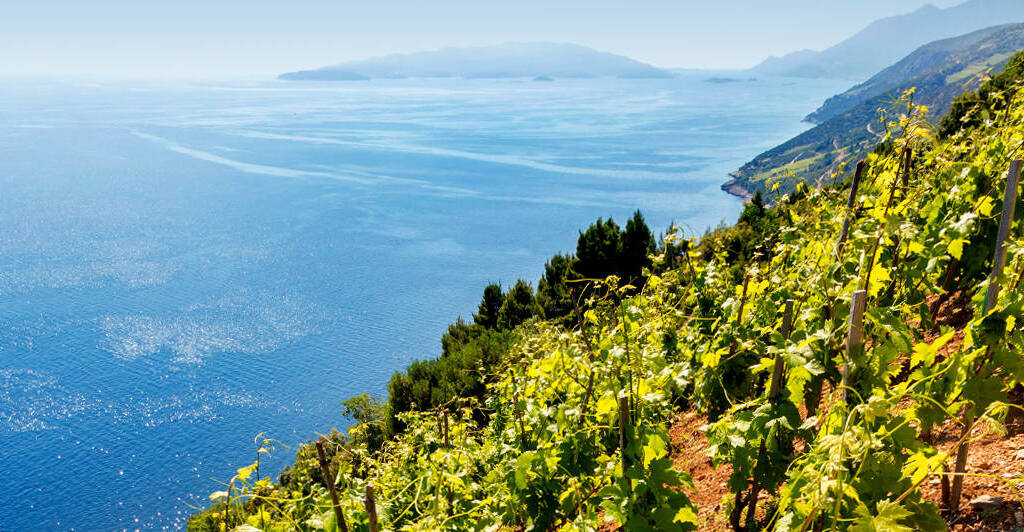
Dingač and Postup are the first protected designations of origins in Croatia, but other spectacular vineyard positions exist in Croatia. Some of them are truly Extreme.
Like the famous Dingač and Postup, other Dalmatian vineyards share similar characteristics. For example,
- Ivan Dolac and Sveta Nedjelja, on Hvar Island
- Murvica and Stipančić, on Brač Island
All of them feature:
- southern exposure
- overlooking the sea reflecting the sun
- very steep slopes
- white rock soil type
There is one another circumstance they all have in common. Plavac mali grape is the dominant grape variety traditionally nurtured in such conditions.
Extreme vineyard on Brač Island: Stipančić
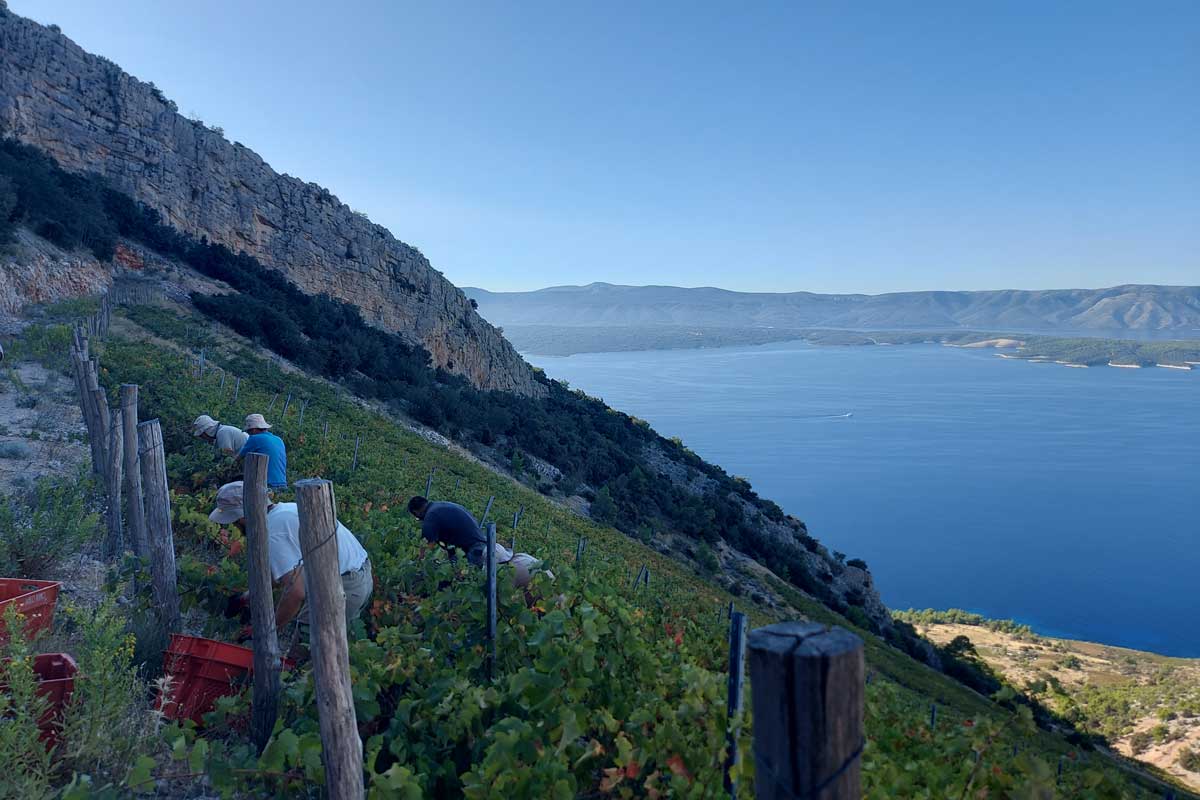 “Steep-an-chich”, steep indeed, is one of those places that looks like a postcard. It looks like you could easily climb there to enjoy the view. You might even ignore the sharp white stones and venture up on a hot summer day, wearing your beach flip-flops.
“Steep-an-chich”, steep indeed, is one of those places that looks like a postcard. It looks like you could easily climb there to enjoy the view. You might even ignore the sharp white stones and venture up on a hot summer day, wearing your beach flip-flops.
Temptation is justified, but beware of the harsh conditions. Extreme vineyards such as Stipančić often possess the appeal. Rarely is it smart to follow your heart.
In a total of 4 hectares, only Plavac mali is strong enough to thrive on Stipančić. The ascent is full of sharp turns on unstable gravel terrain with a scary view of the precipice, so standard road vehicles cannot access the vineyard. Vineyard work is entirely manual.
White stones in the topsoil are typical for the Dalmatian coast, especially the Brač Island. Brač stone is high-quality limestone quarried on the island of Brač in Croatia This stone has been widely used in construction and sculpting for centuries. The white and sometimes slightly greyish limestone is known for its durability, versatility, and aesthetic appeal.
The strength of the island, the Brač stone, inspired Stina winery labels that, like wine, are not easily forgotten. Each bottle, labelled in white with a texture reminding of the Brač stone, bears witness to Dalmatian cultural heritage. Especially so is the case with Stina Plavac mali Stipančić, a single vineyard wine coming from these extreme slopes.
The Stina Plavac Stipancic presents a profound and distinctive experience, defying commonplace descriptors with a noble quality that transcends traditional wine jargon.
Dark and deep fruit, persistent herbal accents, and unyielding minerality characterise its complex palate. At the same time, tannin structure, with a leathery texture, gracefully coat the palate, allowing the wine’s intrinsic character to persist.
Experience is “plasmatic”, embodying the essence of sun-soaked soil and a deep connection to its origin. Carob and sage showcase a unique interplay of tannic structure and robust body. Stina Plavac Stipancic is an exceptional terroir wine, deserving of appreciation for the finest tables.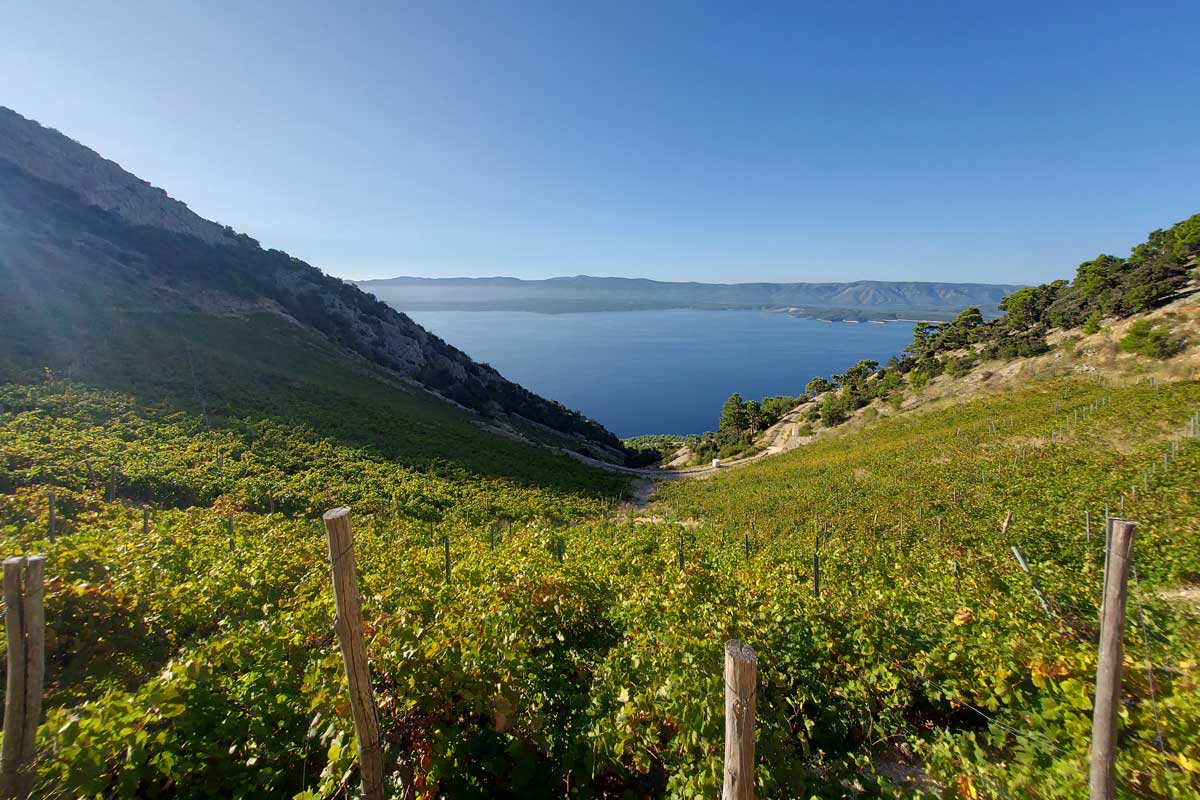
Volcanic Vines: Wines Born from Fire
Nature’s fury meets viticulture’s finesse in volcanic vineyards. These unique landscapes, born from the ashes of ancient and not-so-ancient eruptions, give rise to wines with a distinct character. Meet the fiery origins of volcanic wines and the terroir that sets them apart.
Typically, these volcanic soils dramatically influence winemaking, resulting in wines that are full of vibrate substance. Exhibiting characteristics such as saltiness, savoriness, and, at times, a gritty texture, these wines perfectly embody the character inherent in volcanic landscapes.
Most Extreme Volcanic Vineyards
Apart from being volcanic, not all vineyards on volcanic soil are extreme. Most famous “volcanic wines” come from:
- Campania, in Italy (Mount Vesuvius)
- Sicilia, in Italy (Mount Etna)
- Basilicata, in Italy (Vulture)
- Somló, In Hungary
- Tokaj, in Hungary
- Santorini, in Greece
- Canary Islands, in Spain (Lanzarote)
Some of the most extreme vineyards in the world rest in these places, and probably the most powerful example is:
Lanzarote La Geria vineyard
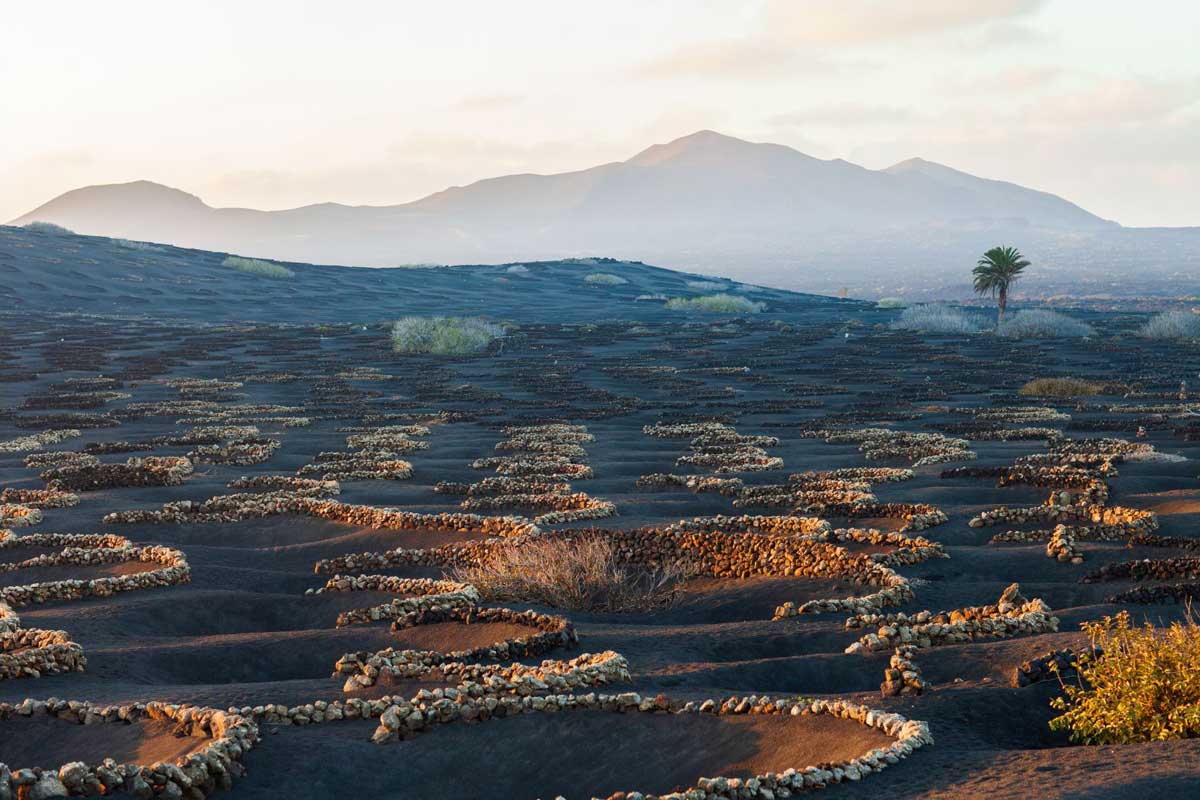
Cultivating grapes in the La Geria vineyard on Lanzarote in the Canary Islands poses considerable challenges. The soil is composed of lava fields and sand, the location is an island in the Atlantic known for strong winds, and rainfall is a rare occurrence. Overcoming these obstacles to produce a couple of million litres of wine annually includes the ingenious solution of planting vines in expansive, deep pits. This helps collect rainwater and offers some shelter against the persistent island winds.
What is the most northerly vineyard in the World?
In the context of climate change, cold-climate viticulture gives a new meaning, pushing the boundaries of viticulture further north in the northern hemisphere.
Winemaking in the Nordic countries has evolved beyond an extreme sport, with vineyards now sprouting across Scandinavia. Hällåkra Vineyard, located in southern Skåne, boasts one of the world’s most northern vineyards. Alongside hybrid grape varieties adapted to colder climates, they have daringly planted Pinot Noir, Pinot Gris, and Auxerrois Blanc.
In Finland, there’s even a tiny experimental vineyard at the 61st parallel north. However, if we focus on sites that do not have greenhouses or have to bury vines in winter to protect them, the northernmost commercial vineyard in the world is located in Telemark, Norway.
Lerkekåsa Vineyard
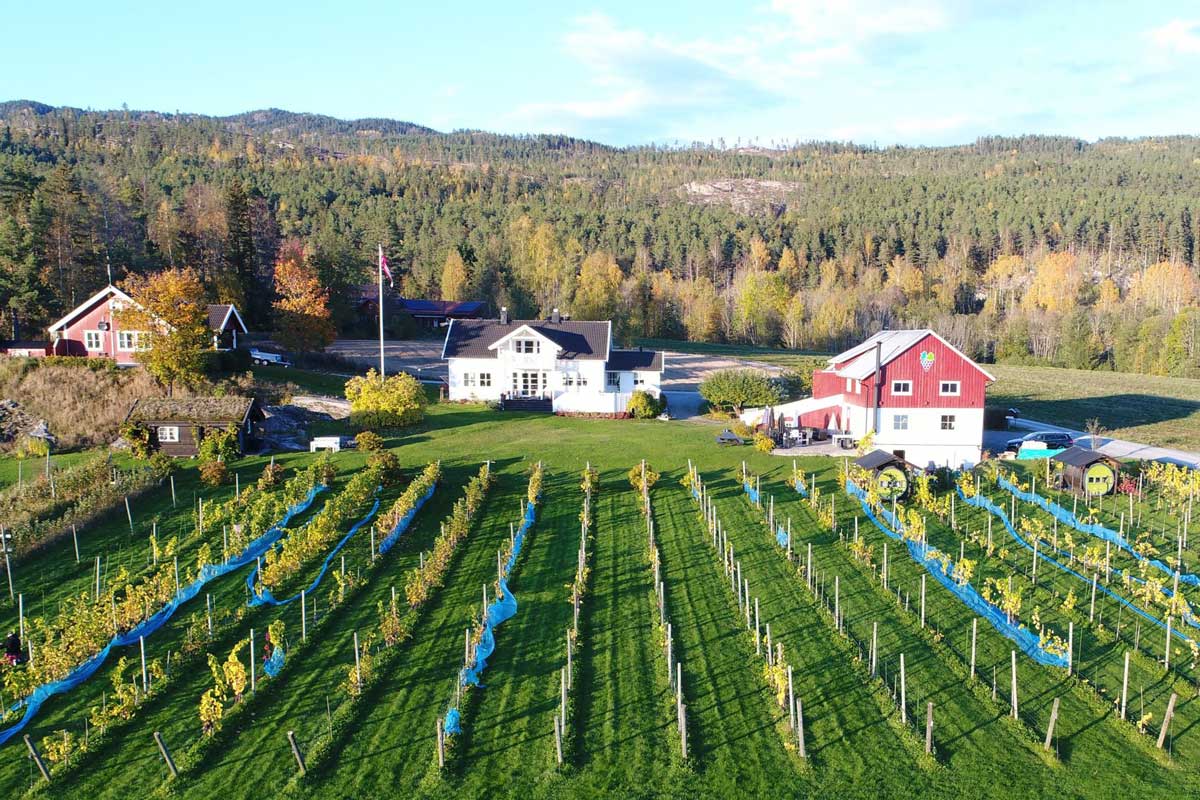
At 59°40′N latitude, Lerkekåsa is similar to Alaska. It is about a two-hour drive southwest of the capital, Oslo.
Of the 20 varieties first planted in 2009., Rondo, Leon Millot and Solaris (all originally from Germany or France) appear to do well in local conditions. Lerkekåsa’s best white comes from the Solaris grape.
Conclusion: Embracing Nature’s Challenges
In extreme winemaking, the pursuit of excellence knows no bounds. From the lofty altitudes to the steep slopes and diverse soils, winemakers continue to push the envelope, creating wines that tell stories of resilience and innovation.
As we raise our glasses to these daring endeavours, we celebrate the exceptional wines and the spirit of those who dare to explore nature’s extremes in the pursuit of vinous perfection.



















